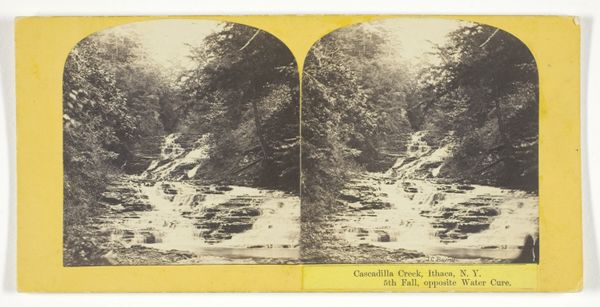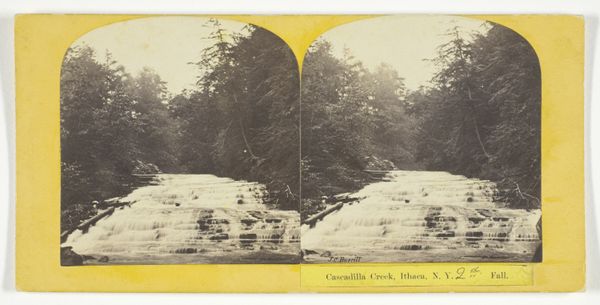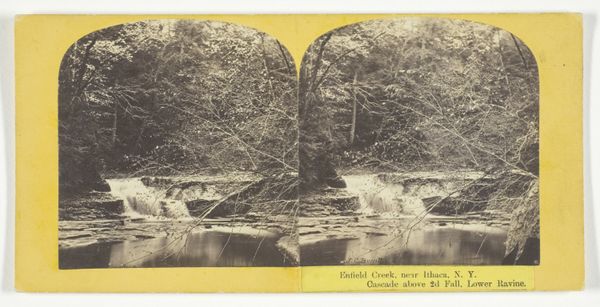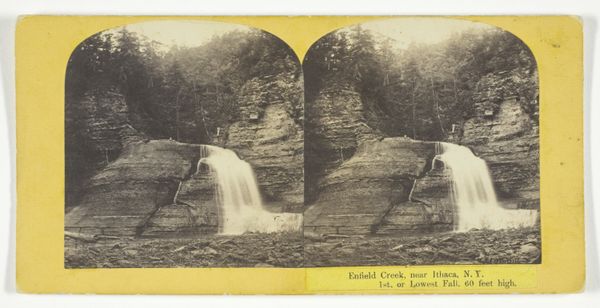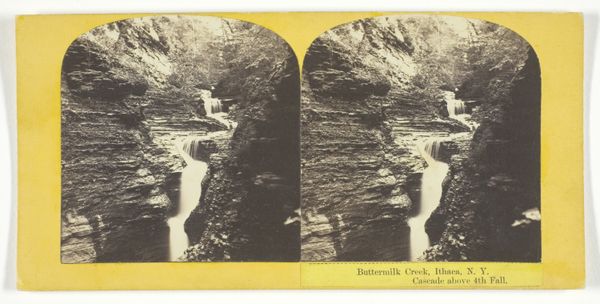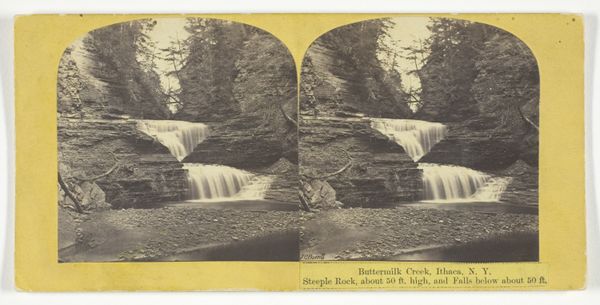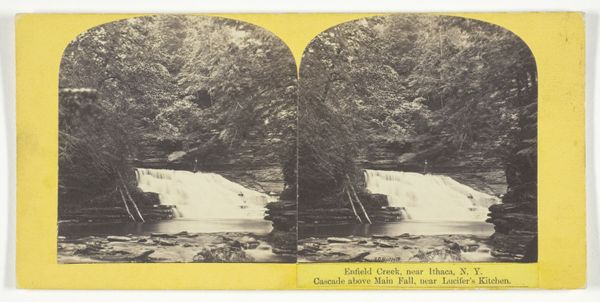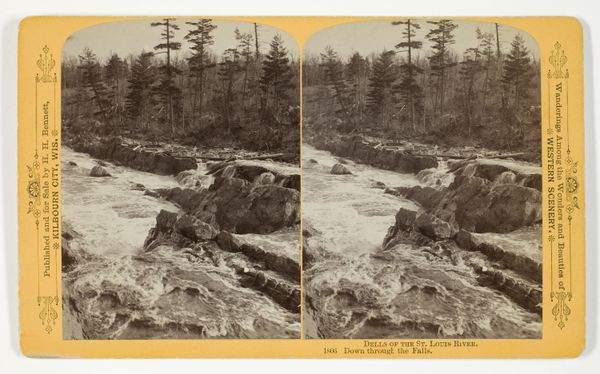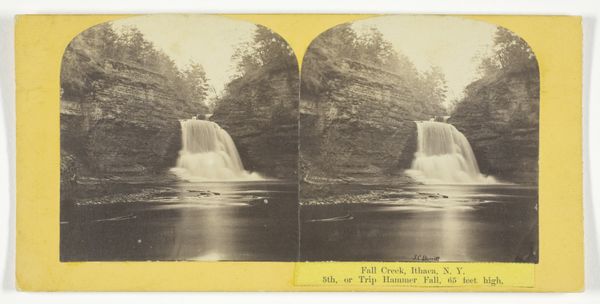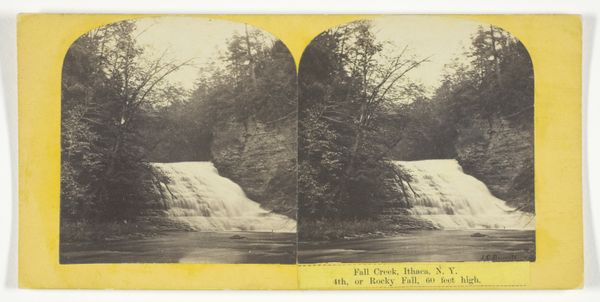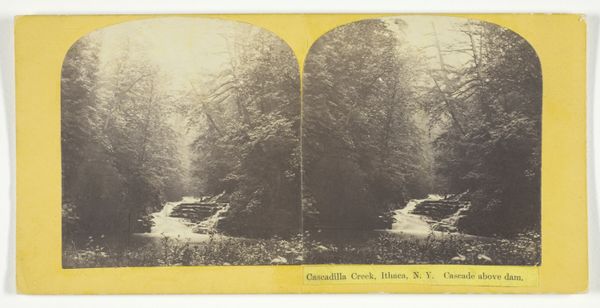
Dimensions: 7.5 × 7.2 cm (each image); 8.4 × 17.1 cm (card)
Copyright: Public Domain
J.C. Burritt created this stereograph of Cascadilla Creek in Ithaca, New York. The stereograph was a popular form of entertainment in the mid-to-late 19th century. When viewed through a stereoscope, two nearly identical images create a single three-dimensional picture. But beyond the initial novelty, why did people collect these? The rise of photography coincided with rapid industrialization and urbanization. As more people moved to cities, they could maintain a connection to rural landscapes through images like this one. As technology advanced, the world was becoming increasingly interconnected. Stereographs offered a way to experience distant places from the comfort of home. Consider how photography's accessibility democratized art. Unlike painting or sculpture, photography didn't require extensive training. This opened up artistic expression to a broader range of people, influencing which subjects were deemed worthy of representation. By studying photographs like this one, and the social conditions surrounding their production, we can learn a great deal about the cultural values of the past.
Comments
No comments
Be the first to comment and join the conversation on the ultimate creative platform.
